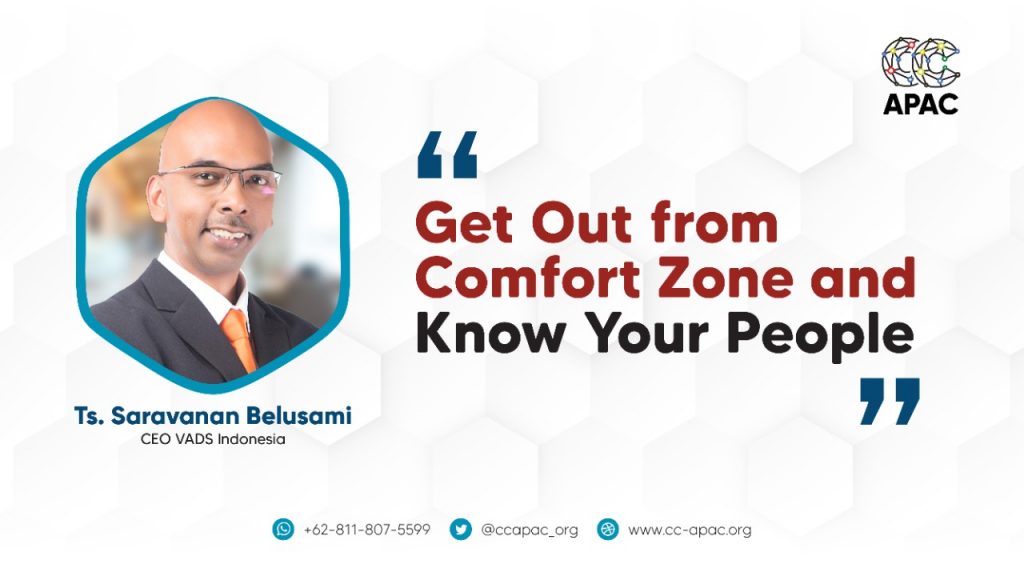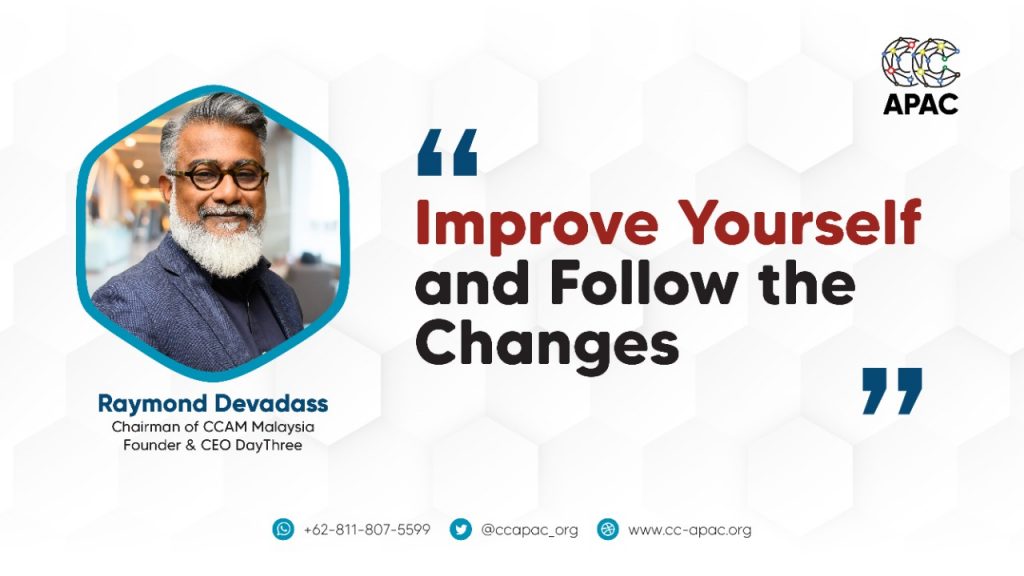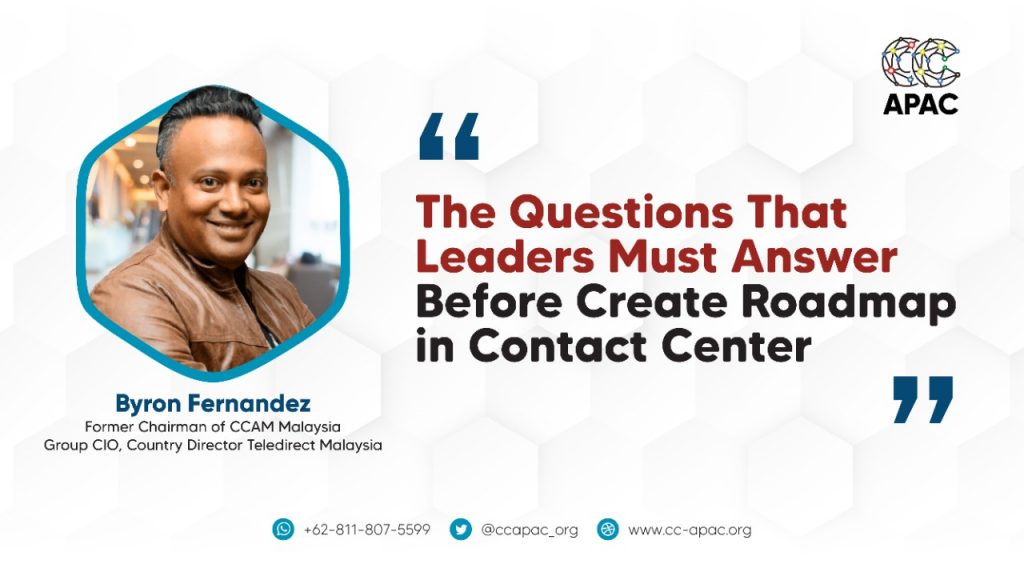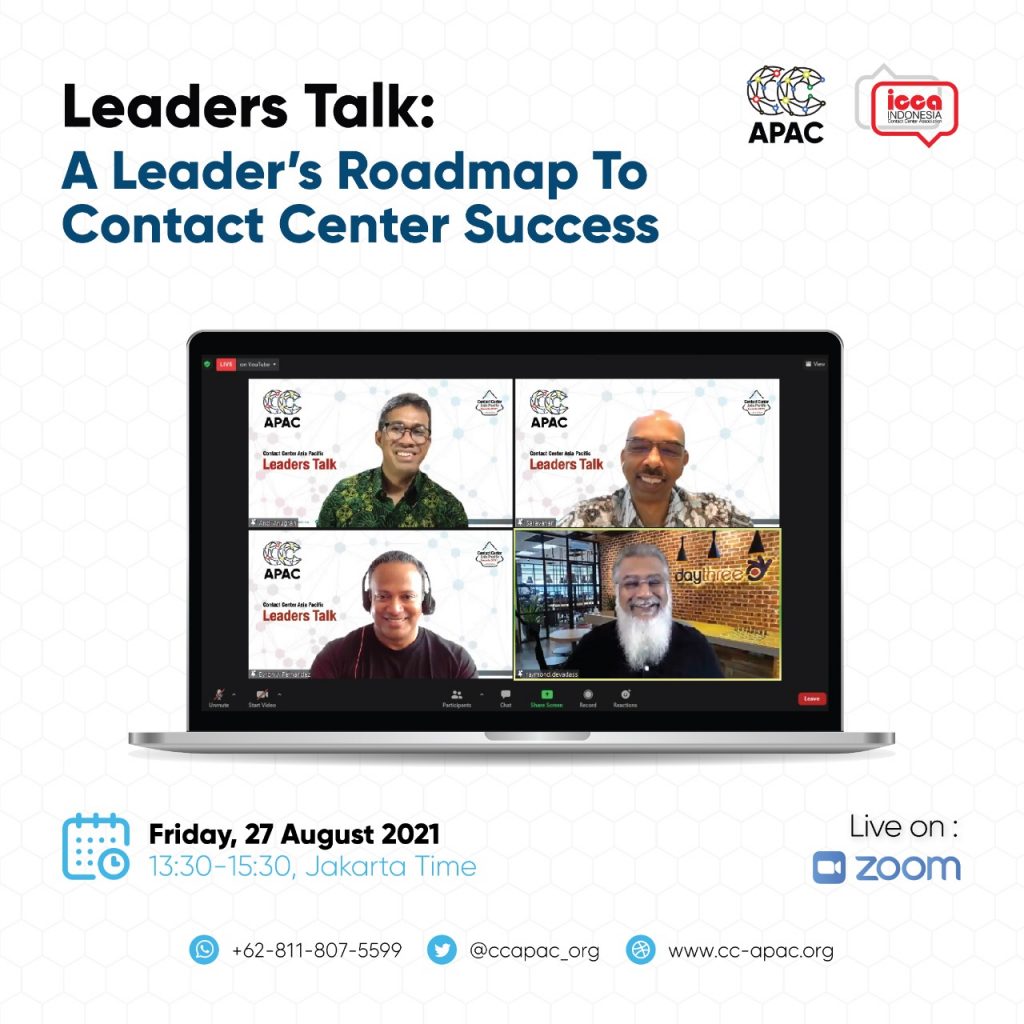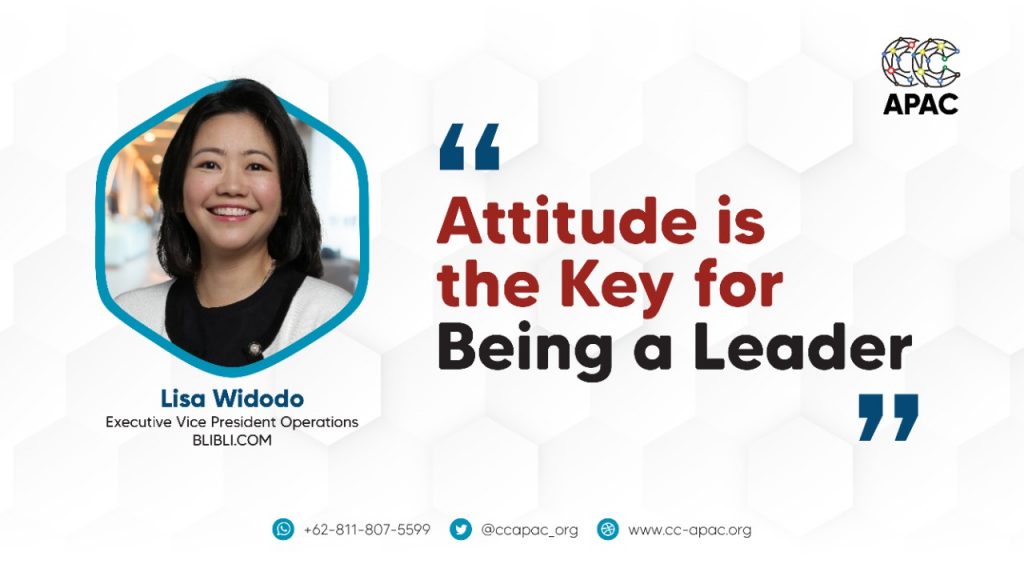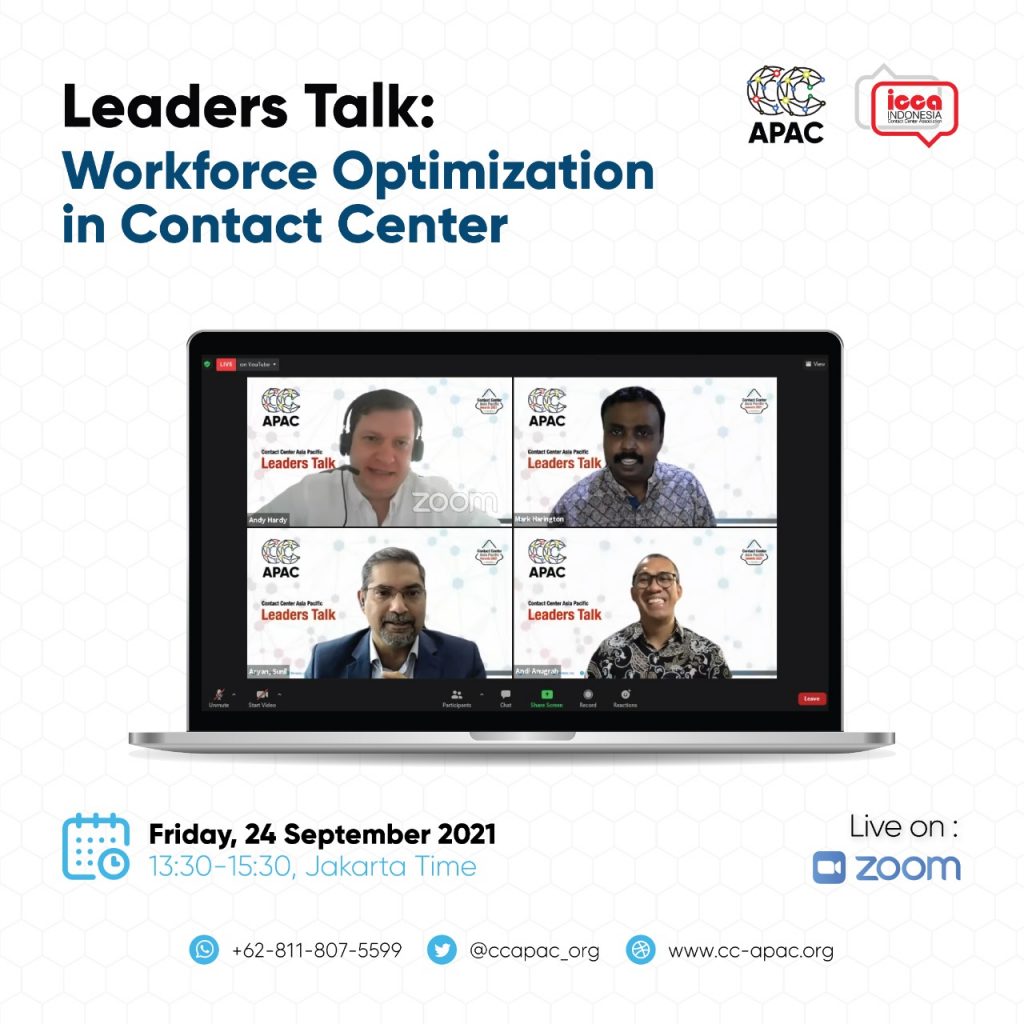
Friday, September 24, 2021 – The fourth Leaders Talk organized by Contact Center Associations of Asia Pacific (CC-APAC) discussed “Workforce Optimization in Contact Center” by inviting three professional speakers to the Asia Pacific contact center.
This discussion was presented by Andi Anugrah, Chairman of ICCA Indonesia. The first panelist is Andy Hardy, Strategic Director of Employee Engagement for Genesys in Australia, and New Zealand. The second is Mark Harington, Vice President Solutions, APAC at NICE Ltd. The last one is Sunil Aryan, Director Practice Backoffice and Retail, Asia Verint.
The first discussion is talked about optimizing the workforce in the current contact center. Andy said that optimizing the workforce in the contact center is very important at this time. Investment in employees is typically the most expensive cost to any organization and business. Therefore, it’s more appropriate not to replacing our employees with new ones because it will cost more. Then, it will help us manage employees easily and engage them to be more involved in the work. Because by keeping our current employees, we will get a better level of service.
Aryan also explained that optimization or workforce engagement management is evolving and has become very important, especially for the contact center. In optimizing the workforce in the company, we must consider the perspective from the employee’s side while trying to achieve what our contact center is.
For example, a receptionist. Some people’s perspective of a receptionist is they job is just to answer the call. We don’t see them as a fancy calculation mechanism. We treat them well. They are here not just to answering the call, but they are here doing business and have taken a very remarkable journey.
Because no one saw that they were here for company business purposes then, this optimization concept is the way for us to develop them more engagement if we see it as a good calculation mechanism. We must be able to determine the right number of people at the right time or look at the quality. That will have a lot to do with how we deliver better and faster results to our customers.
Mark has a different opinion from other speakers. Mark said that the industry has now come to a better. He thinks that we need to the engaged workforce. Nowadays they don’t seem like a receptionist because they answer the questions so hard. Compare it to chatbots and any other websites that can’t answer some of the questions, the receptionist is still better. And that is why you need to keep them involved and make their life easier, faster, better, and engaged.
The next discussion is talking about the strategy of optimizing the workforce in the contact center. Andy said that we need to use the information and insight that we have on our employees. He tried to get back the basics of service, such as what service to provide to customers. Then moving on to the employee experience, think about service providers.
Then, we can start thinking about how we engage our employees and what technology we need to provide that service. If we can start to correlate those two things together, we can start to be very smart around. Also, think about how you start to build your strategy. He would start there and use the data and insights.
Mark also shared his perspective about that strategy. He calls that strategy is a thick layer on the boiled egg. The thick layers are what our company decides on how to talk to our customers. Every company decides differently because some companies want to keep their customers happy and want their customers to love them. Some companies just don’t care about their customers and do the basic stuff only.
Aryan’s opinion of that strategy is sometimes we need to look at it from a third perspective view because we need to look at what matters to the center at that moment. Are we looking at cutting down costs or are we trying to increase our service because it depends on the stage of the organization? We may have to take one of those steps.
Workforce optimization integrates technology into a single point of management to increase the visibility of customer interactions, employee performance, and business processes. By analyzing all customer interactions, businesses can leverage insights to train their employees and streamline workflows to improve the overall quality of customer service.
We also discussed the importance of collaboration in the application of technology. The important thing is having a partner in building a contact center. For this reason, users need to build engagement with vendors then they can get maximum results in the application of technology. Because all speakers in this discussion are vendors, they hope to build relationships with users, then they can maximize the functionality of the technology and provide benefits according to business goals.
At the end of the discussion, all panelists give their summary and tips about the implementation of workforce optimization in the contact center. Want to know more about their opinion? For details, stay tuned for another article on the CC-APAC website. (ANF)




